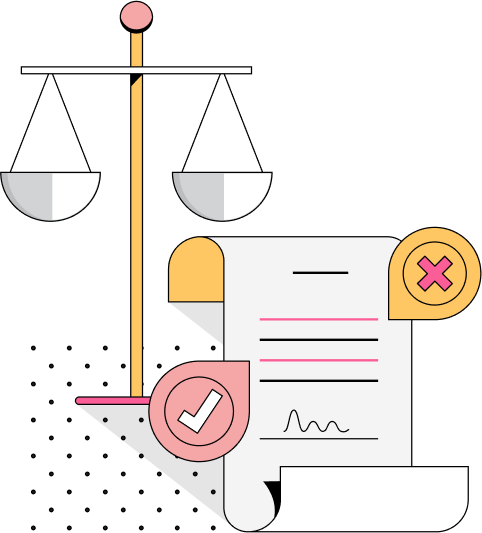The Beginner Guide to the Law of Worker Classification in the UK

An employee is someone who works for someone else’s business. In legal terms, an employee has entered or works under a “contract of employment” or a “contract of service.” Employees perform work under their employer’s control or direction and, in exchange, receive a set wage or salary. Employees receive protections and benefits under employment law, guaranteeing them benefits such as minimum wage, paid holidays, vacation time, notice of termination, and protection from wrongful terminations.
A contractor is a self-employed person “in business on their own accord” or party to a “contract for services.” A contractor provides a service for the client or principal, and they typically have the freedom to control their work, such as what jobs to do, how and when to do the job, and the price of the service. Contractors typically are not entitled to employment benefits, nor are they entitled to protection from wrongful terminations and minimum notice periods.

Overview of the worker classification
In the UK, contractors fall into two subcategories: independent contractors and dependent contractors. A dependent contractor is an intermediate category between an employee and an independent contractor. They are typically workers who rely on a single client for work but are not employees due to having the characteristics of an independent contractor.
Unlike independent contractors, dependent contractors are entitled to some benefits such as minimum wage, paid holidays, and sick and family leave pay. Still, they are not provided with minimum notice periods, protection from wrongful terminations, time off for emergencies, and statutory redundancy pay.
Overview of worker classification in the UK
Workers are classified based on the degree of control over their work and the degree of economic reliance on the employer or client for income.
To summarize the legal test, the courts provided a set of factors to determine the status of a worker1:
- How much control the employer/principal has over the worker’s tasks and how it’s done
- How much control the employer/principal has over where and when they perform the job
- Whether the worker can hire subcontractors
- Whether the worker uses their own tools and equipment
- Whether the employer/principal is obligated to provide work and whether the worker is obligated to perform the work
- The worker’s opportunity to increase their earnings (such as being more efficient to take additional jobs)
- Whether the worker can work for others
- How essential the worker is to the company (for example, whether they have the same responsibilities as regular employees or perform an essential role in the employer/principal’s business)
- The intentions of the parties to establish an employer-employee relationship demonstrated in the contract or communications between the parties (usually carries little weight)
It is important to note that the above list is not a complete set of factors used to determine worker status. Rather, the courts decide on the relevant factors on a case-by-case basis and may even introduce additional considerations to make a decision.
Employee classification criteria
Employees have little control over their work and rely on the employer for income. A worker can be classified as an employee if some of the following characteristics are present:
- The worker works exclusively for one employer
- The worker receives a salary or hourly wage
- The worker reports to the employer-designated workspace
- The worker has clearly defined working hours set by the employer
- The worker must personally perform the work
- The employer is obligated to provide work, and the employee cannot turn down the work
- The employer provides the tools and equipment
- The employer determines what work to do and how it’s performed
- The employer pays for the worker’s job-related expenses
- The employer is responsible for any losses incurred by the business
Independent contractor classification criteria
Independent contractors have much more control over their work and are not reliant on a single principal for income. A worker can be classified as an independent contractor if some of the following characteristics are present:
- The worker works for multiple principals
- The worker receives payment for the completed work on a predetermined basis
- The worker decides where they perform the work
- The worker sets their own working hours
- The worker may hire their own helpers/subcontractors to complete the work
- The principal does not have an obligation to provide work, and the worker is free to turn down work
- The worker provides the tools and equipment
- The worker determines what work to do and how to perform it
- The worker pays for job-related expenses
- The worker is responsible for any losses incurred by the business because of the job
Dependent contractor criteria
In the UK, there is a third intermediate category called dependent contractors. A worker can be classified as a dependent contractor if the following characteristics are present2:
- The worker is hired to perform work for the principal
- The worker primarily depends on the principal for work and income
- The worker is required to perform the services or work personally
- The worker is not an employee or under an employment contract
Dependent contractors are entitled to certain employment rights, including:
- Minimum wage
- Protection from unlawful deductions
- Paid holidays
- Mandatory length of rest breaks
- Protection from working more than 48 hours on average per week
- Protection from unlawful discrimination
- Protection for whistle-blowing
In addition, dependent contractors may be entitled to:
- Statutory sick pay
- Statutory maternity/paternity pay, adoption pay, and shared parental pay
Important things to keep in mind when engaging contractors
Dependent contractors have control over their work but primarily rely on a single client for income.
In Canada, there is a third intermediate category called dependent contractors. Dependent contractors are workers who have their own business but primarily rely on a single client for income3.
A worker may be classified as a dependent contractor if some of the following characteristics are present:
- The worker is found to be an independent contractor
- The worker makes more than 50% of their earnings from a single client
- There is a contractual term stopping the worker from working outside of the relationship. Alternatively, the nature of the work relationship prevents the worker from finding other clients in practice (for example, if the worker is not able to find another client who requires their specialized skills)
Important things to keep in mind as a contractor
Contractors can provide services as a sole proprietor or an incorporated entity
In the UK, a contractor can provide services as a sole proprietor or under a corporation. There are no requirements to incorporate as an independent contractor to provide services. However, incorporated contractors are entitled to certain tax advantages unavailable to sole proprietors.
There are also no requirements for a worker to have a certain number of clients to be considered an independent contractor. However, the client may be required to provide notice of termination if the contractor is found to be a dependent contractor.
Workers can work as an employee and a contractor at the same time
Workers can work as employees for one company and contractors for another. However, it is important to note that workers may be subject to non-competition and confidentiality clauses in their contracts, preventing them from working for certain clients and employers.
Although rare, it is also possible for a worker to be both an employee and a contractor for the same company. This scenario would require the contracts to be carefully structured to be independent and distinguishable from each other, and the terms and conditions of the worker relationships would have to show the need for each employment status. However, there will always remain a chance that a court finds this arrangement amounts to misclassification.
Independent contractors with only one client are at risk for misclassification
An independent contractor with only one client may risk being classified as an employee or dependent contractor.
Generally, the presence of additional clients, or the ability to take on clients, indicates an independent contractor relationship, as opposed to employment. The number of clients required for this determination is undefined, and it depends on the unique context of the work relationship.
Contractors are not required to have a certain amount of earnings per year to retain their status
In the UK, there is no requirement for a worker to earn a certain amount per year to be an independent contractor or a dependent contractor. Instead, the courts focus on how workers generate earnings to determine their status.
For example, independent contractors operate their own businesses, meaning they are responsible for ensuring they are profitable. They typically receive payment by the task or commissions, where they can generate additional revenue by becoming more efficient at their work and taking on more contracts. They can also earn nothing or even incur losses if they perform the job poorly.
In contrast, employees receive a fixed wage or salary, which does not change if they become more efficient at work or cause the employer to suffer losses. Generally, employees only have an opportunity to increase their earnings if they work more hours.
Contractors may be eligible for unemployment benefits under the UK Government
In the UK, a contractor may be eligible to claim Universal Credit3 if they are:
- Living in the UK;
- Be aged 18 or over;
- Be under the State Pension age and
- Have £16,000 or less in money, savings and investments
There are no restrictions on the worker's employment status, as they can collect Universal Credit whether they are out of work, working (either self-employment or part-time), or unable to work due to a health condition, for example.
1 Regina v Walker [1858] 27 L.J.M.C. 207; Montreal v. Montreal Locomotive Works Ltd. et al [1947] 1 D.L.R. 161; Stevenson Jordan and Harrison, Ltd. v. MacDonald and Evans [1952] 1 T.L.R. 101; Ready Mixed Concrete (South East) Ltd v Minister of Pensions [1968] 2 Q.B. 497
2 Uber BV and others v Aslam and others [2021] UKSC 5; Employment Rights Act, 1996, s. 230(3) https://www.legislation.gov.uk/ukpga/1996/18
3 https://www.gov.uk/universal-credit/eligibility



